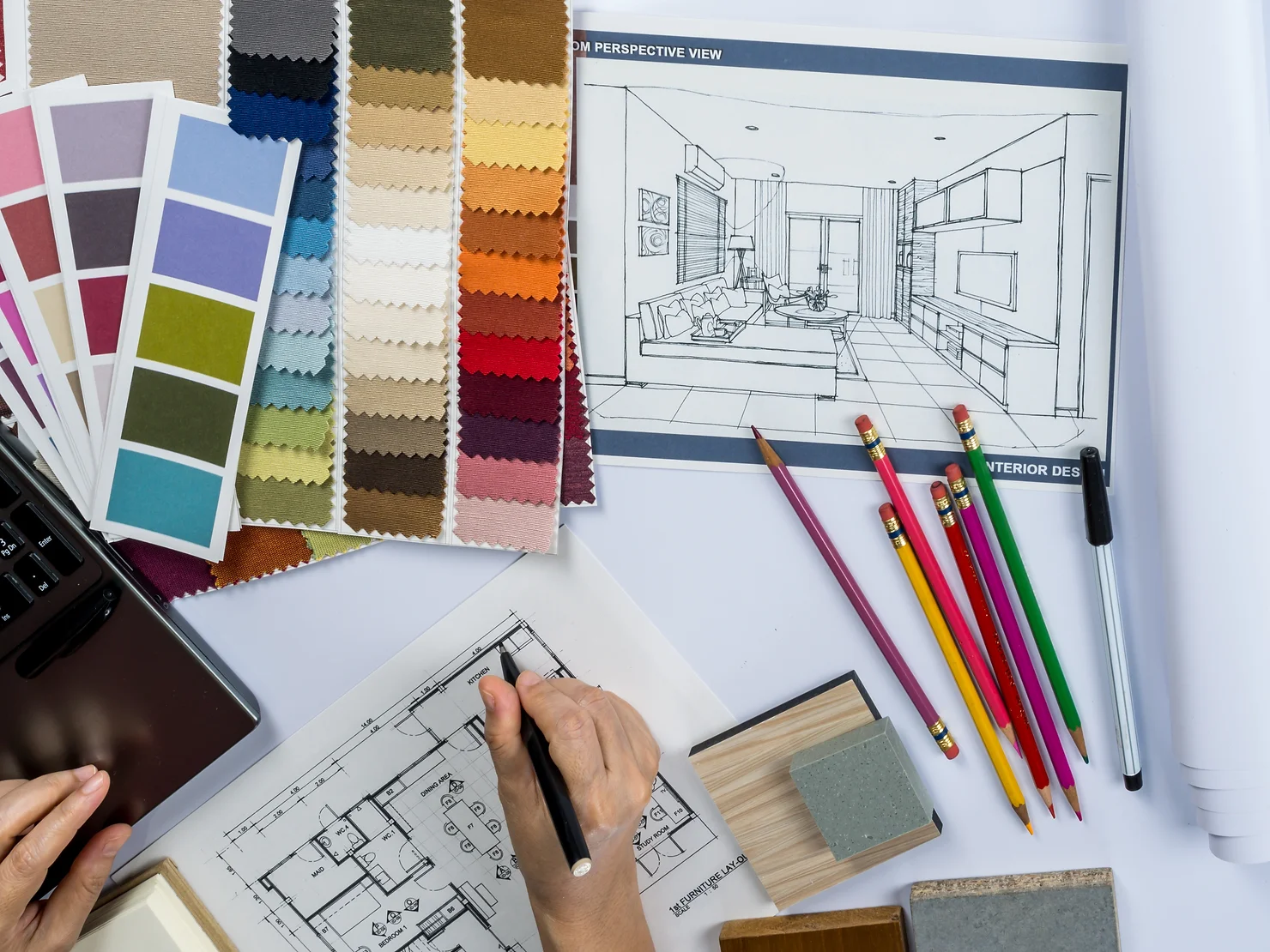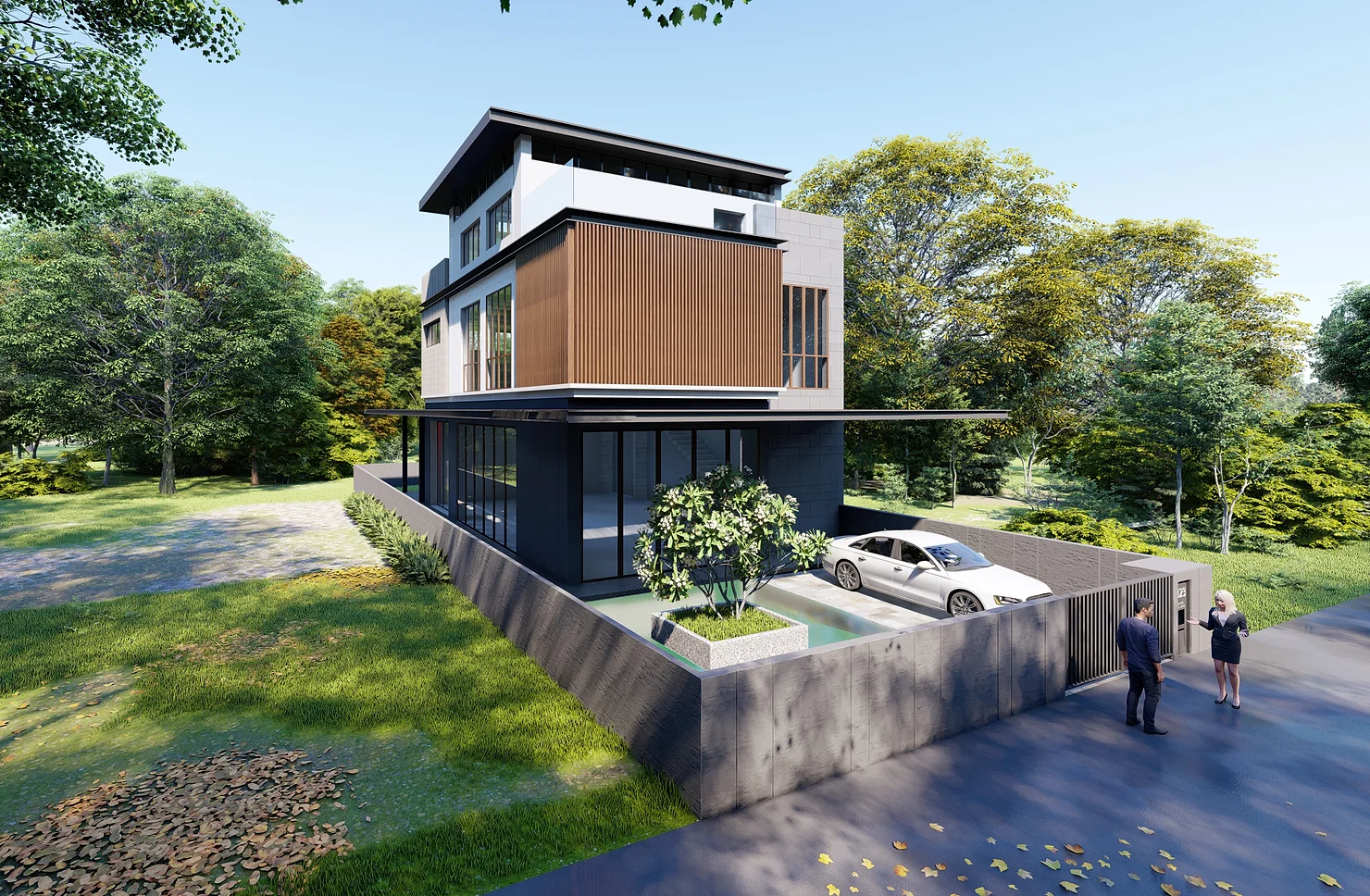With property prices in Singapore feeling like they are still through the roof, renovating a landed house is an option for many. This could be an original condition Terrace, Semi-Detached, or Detached/Bungalow with a nice garden for the kids to play. Before buying a landed home in Singapore, it’s essential to consider various factors.
In this quick guide, we are taking the perspective of those purchasing a private landed property. We offer some ‘first-steps’ tips to ease you into the exciting journey of house-hunting. If you are purchasing from a property developer, do check out the Home Buyers’ Guide from URA. It can give you some insight into the process of buying a property.
First, Consider the Property Type
This post is a more technical piece dedicated to older houses. It focuses on real issues to look out for and consider before that big commitment. There is so much that goes into a house, and your freehold property probably does not have lifelong specifications that could weather the elements comfortably.
But the first thing to think about is the type of property you’re dealing with. Landed properties can fall under the following:
- Terrace houses.
- Detached houses, including good class bungalows.
- Semi-detached houses.
- Strata-landed houses or cluster housing which is a hybrid of landed and non-landed property.
Present and Future Infrastructural Planning
Singapore is constantly growing and evolving its infrastructure with new MRT lines, schools, and hubs to improve connectivity between communities. These improvements are all potential uplifting effects on land and home values.
Major transportation improvements are probably the most important thing to look out for. An example would be the upcoming Cross Island MRT Line and new expressways like the North-South Corridor. These will make travelling across the island a little easier. Singapore is investing heavily in green initiatives too, which is another thing worth researching in the local area.
Prices of a Landed Home in Singapore
With a lack of a strong supply of landed homes, prices of landed homes are trending up more than prices of non-landed homes during an upswing in prices.
However, with the latest cooling measures, the cost of home acquisition is now higher. URA makes upcoming projects and recent private property data very transparent, so couples can be prepared for the negotiations ahead.
Factors such as location, land size, and property condition are the most important factors in determining the final price. It’s worth noting that prices can vary dramatically even within the same neighbourhood, which is why it’s important to do your research beforehand.
Potential buyers need to think about the additional costs that are associated with landed properties. These can include higher property taxes, increased maintenance expenses, and potentially significant renovation costs, especially for older properties. You also need to consider a mortgage or loan if you need one.
The First Viewings: What to Look For
With all the eligibility and finances checked, it is time to start viewing some shortlisted properties. While it is quite easy to get distracted by the interiors of a house and the big driveway when viewing the property with a property agent, there are several things to pay attention to. These will affect your well-being in your future home.
To save yourself some time and cost from otherwise foreseeable issues, the following must be evaluated:
1. Orientation and Natural Day-lighting
Environmental variables should play an important role in your home selection, especially in Singapore’s tropical climate. The orientation of a home will pre-determine the comfort level and property value of your new home.
A well-lit, naturally ventilated home will also save on energy consumption. Check for prevailing wind conditions and schedule viewings at different times of the day. This will give you a realistic understanding of your selected site.
2. Envelop Control and Allowable Building Levels
Planning for a new erection or reconstruction for the landed property you have set eyes on? URA has a specified a set of development guidelines on maximum allowable building heights in an area.
The revised Envelop Control guideline, released in 2015, has also relaxed controls over building massing. This change encourages more creative and flexible design forms for your home.
However, landed houses still continue to be subject to the two-storey or three-storey height control applicable to each landed housing area. This is to maintain its character.
3. Cracks in the house
On the walls, in the ground and by the windows. If there are cracks showing, it needs to technically-assessed. Even hairline cracks could point to a bigger issues than meets the eye.
Other construction works nearby may cause the property to be susceptible to movement. This depends on the structural foundation on which it is built.
4. Soil Condition
Has the neighbours an extra 1-2 floors? It helps to understand the soil condition and type of foundation (e.g. piling or footing) was used. Homes in the Eastern parts of Singapore, which is made up of soft clayey soil, will require more rigid foundation.
You may simply ask the neighbours about the build of their house, but it is good practice to engage a soil investigation company. They can carry out a survey to determine the foundation of your future home.
5. Roof, Gutters, Critters
A leaky roof will wreak all kind of watery damage to your home. Catch indications of leaky roof such as mouldy, sagging ceiling; or schedule an inspection after a heavy rain. Regularly clogged gutters also indicate inherent defect and issues during the monsoon season.
Termite infestation could also be a costly latent issue to note, especially when buying old property. Always factor in a budget for professional inspection and repair costs, even if you are eyeing a property with ‘move-in’ condition.
6. Illegal Modifications
Previous owners may have carried out modification works to the property, without obtaining necessary approvals from building authorities. It is important to get a complete picture of approved works and recent alterations (eg. roof/ canopy extention).
The liability will be transferred to the new owner upon completion of purchase. Therefore, one must be ready to undertake the responsibility if the building authorities ever reach out to you.
This is by no means a complete list, and some areas will need to be explored more in detail depending on the property. Before going on the property viewing journey, have a no-obligation chat with us. This will help you choose a home that is fit for your family’s purpose with no hidden defects which may cost you later.
Book An Appointment to understand your options, possibilities for your house and how we work.
7. Asbestos
Yes, asbestos is still a thing in Singapore. It is very relevant for buyers of original condition houses looking to do a real ‘fixer-upper’. Asbestos are fibres in ceiling boards used in the construction of houses pre-1990. The fibres are cancerous to people who unfortunately breathe them in.
The particles would stay in your body and come to haunt you years later. Essentially, having asbestos around in the house is no different from poisoning. Sounds serious right! If you go to view a house that was built pre-1990 in original condition and is very run down, but may have a reasonable price tag, then the ceiling and ventilation blocks may have asbestos.
All old buildings before 1990 are required by law to undergo an asbestos survey before any major construction works can be done. This is mandatory for projects requiring submissions but not a requirement for renovation where there are no Authorities/agencies to report to.
You can ask the property agent, but from the author’s personal experience, not all property agents know. Maybe because it isn’t a very good selling point for the house?! :/
An Asbestos surveyor would send the relevant samples to a lab test. If the cancer-causing material is found, it is mandatory by MOM’s (Ministry of Manpower) law that personnel handling Asbestos be in full hazmat suit and full PPE attire. Yes, that is how serious this is.
At the end of the removal, an air quality test needs to be done to certify that the surrounding air is void of all substrates. It must be within the “safe” levels for human consumption.
Conclusion
With property prices in Singapore feeling like they are still through the roof, renovating a landed house is an option for many. This applies whether it be an original condition Terrace, Semi-Detached, or Detached/Bungalow with a nice garden for the kids to play.
There are extra costs that can be unforeseen and not accounted for when budget planning before you buy your ‘rare gem’. Making sure you research all the potential expenses is wise. It can help you avoid financial strain during the renovation process.


